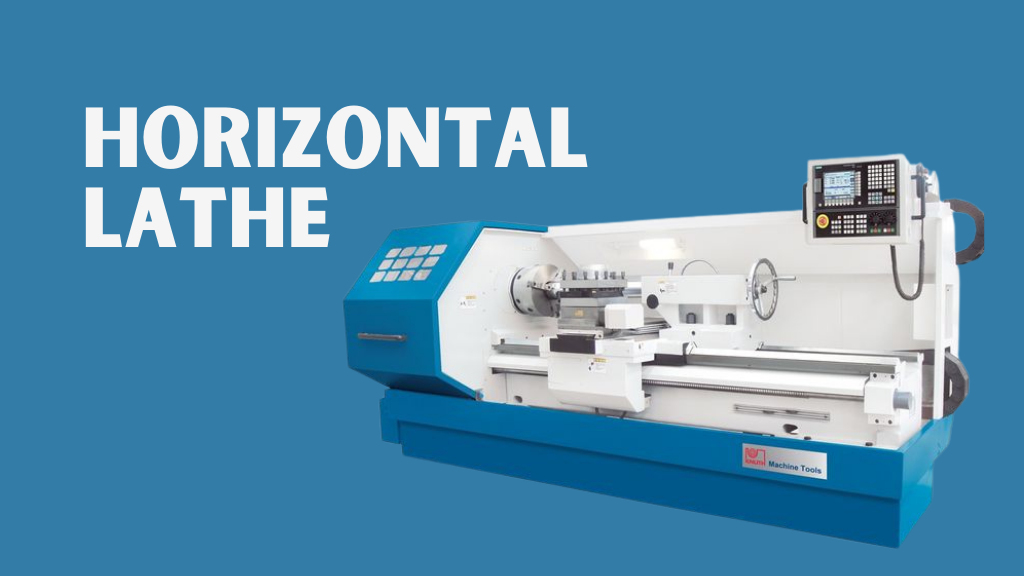In the world of precision engineering and advanced manufacturing, lathes remain one of the most essential machines. Among them, the horizontal lathe plays a central role,
especially in industries that demand accuracy, consistency, and scalability. From aerospace to automotive, and from energy to heavy machinery, these machines have become indispensable tools for shaping raw materials into precise components.
This article provides an in-depth look at industrial turning machines, their working principles, applications, benefits, and future potential. Whether you are an industry professional, a student of mechanical engineering, or a business owner evaluating machinery investments, this guide offers the clarity you need.
Introduction to Horizontal Machines
This is a machine tool designed for turning, facing, and shaping cylindrical workpieces. Unlike vertical lathes, where the spindle is oriented vertically, horizontal lathes have a horizontally mounted spindle. This orientation makes them especially effective for handling longer or heavier workpieces that need strong support during machining.
The concept of lathes dates back centuries, but the modern horizontal machine has evolved into a highly sophisticated system, often integrated with CNC (Computer Numerical Control) technology. Today, these machines are not only capable of basic cutting but also advanced operations such as threading, grooving, and even complex contouring.
Industries ranging from defense to oil and gas rely heavily on these machines for consistent and efficient output.
Understanding the Machining Process
In modern manufacturing, precision turning begins with the careful rotation of a workpiece against a fixed cutting tool. The accuracy of this process depends heavily on the design and quality of the machine’s components such as the bed, spindle, chuck, tool post, carriage, and tailstock. This type of equipment is specifically engineered to keep these components aligned, ensuring stability, precision, and repeatability. It has become a critical tool in industries like aerospace, automotive, and heavy equipment manufacturing where consistent performance is non-negotiable.
To illustrate, consider how a crankshaft is produced for high-performance engines. The raw material is securely mounted, rotational speed is calibrated, and cutting tools are engaged to shape the shaft within micrometer-level tolerances. In CNC-controlled horizontal lathes, this process is automated and digitally monitored, reducing human error and improving efficiency at scale. These advancements represent a cornerstone of precision engineering, combining centuries-old machining principles with modern smart technology.
Types of Horizontal Lathes
The horizontal lathes come in different variations to serve the needs of various industries. Traditional models are still in use today, especially in workshops and training facilities, where machinists prefer hands-on control for custom projects and repair work. Though less advanced than automated systems, these machines remain valuable for their flexibility and reliability.
As manufacturing demands have grown, CNC models have become the standard in large-scale industries such as aerospace and automotive. By following pre-programmed instructions, they achieve high levels of repeatability, faster cycle times, and superior accuracy. These benefits make them an essential choice for businesses focused on efficiency and consistent output.
For specialized needs, industries often turn to heavy-duty or precision designs. Heavy-duty versions are built for oversized workpieces common in mining, energy, and oil and gas sectors, offering strength and long-term durability. Precision equipment, on the other hand, is used in aerospace and defense manufacturing, where micrometer-level accuracy ensures safety and performance in critical components.
Horizontal and Vertical Lathes Compared
When comparing these two machine types, the main difference lies in spindle orientation, which directly affects performance and applications. Horizontal models position the spindle parallel to the ground, making them ideal for long, cylindrical workpieces. In contrast, vertical lathes place the spindle upright, allowing them to manage wider, heavier, and flat components with greater stability.
Horizontal models are commonly used in industries such as automotive, aerospace, and defense because they provide strong tailstock support and efficiency in mass production. Their design makes them suitable for producing shafts, rods, and other elongated parts where consistent precision is required. The only drawback is that they generally occupy more floor space, which may be challenging for smaller workshops.
Vertical machines, however, are often chosen in sectors like energy and shipbuilding. They save space on the production floor and make it easier to load and machine very large or heavy components. This flexibility ensures that both horizontal vs vertical lathe options remain valuable in modern manufacturing, with each serving distinct industrial needs.
Industrial Applications of Horizontal Machines
This machine is one of the most versatile tools in modern manufacturing, with applications spanning multiple industries. Its ability to shape, cut, and refine cylindrical workpieces makes it essential for projects that demand strength, accuracy, and durability. From small workshops to large-scale production facilities, it continues to play a central role in delivering high-quality results.
In the automotive sector, these machines are widely applied to produce gears, pistons, and drive shafts that must meet strict durability standards. Aerospace industries rely on them to create precision parts such as turbine blades and engine components, where micrometer-level accuracy is critical. The oil and gas sector also depends on this equipment for machining pipes, drill collars, and heavy-duty components designed to withstand extreme conditions.
Other industries see equal benefits. Energy companies use them for fabricating turbine and generator parts, while defense applications range from precision weapons to specialized equipment. A practical case example comes from aerospace, where a CNC horizontal model is employed to manufacture turbine shafts capable of enduring high stress and extreme operating environments, ensuring both reliability and safety.
Benefits of Using Horizontal Machines
One of the biggest advantages of horizontal machine is its ability to deliver high accuracy and repeatable results, even when working on complex geometries. Manufacturers value this precision because it ensures tight tolerances and consistent product quality. These machines are also efficient, allowing faster cycle times that directly improve productivity in large-scale operations.
Versatility is another key benefit. They can work with a wide range of materials, including metals, plastics, and composites, making them suitable for multiple industries. They also offer scalability—whether in small workshops handling custom projects or large factories producing thousands of identical components. Additionally, these machines are designed for durability, often withstanding years of heavy usage with proper care.
Challenges and Limitations
Despite their strengths, these machines come with certain challenges. Their size means they require significant floor space, which can be a limitation for smaller facilities. Skilled operators are also necessary to ensure safe and effective handling, particularly with manual models.
Another consideration is cost. While they offer long-term value, the initial investment is higher compared to smaller machine tools, and ongoing maintenance and repair expenses can add up. Businesses must weigh these factors carefully when evaluating the return on investment.
Choosing the Right Equipment
Selecting the right machine depends on several factors. Size and capacity are critical, as the system must accommodate the dimensions of your workpieces. Precision requirements should also be evaluated, some industries prioritize accuracy over production speed, while others focus on output efficiency. Power and speed range are equally important for handling different materials effectively.
Brand reputation is another factor to consider. Companies like Cazeneuve and United Precision Services are well-known for offering advanced solutions tailored to industrial needs, with proven reliability and global recognition. Investing in a trusted brand often translates into better long-term performance and after-sales support.
Maintenance and Safety Tips
To maximize efficiency and ensure operator safety, regular maintenance is essential. Inspections should be carried out frequently to identify wear in spindles, bearings, and moving parts. Proper lubrication helps prevent damage and extends machine life, while tool care such as keeping cutting tools sharp and clean maintains accuracy.
Equally important is safety training. Operators should always wear protective gear and be prepared for emergency procedures. Following the manufacturer’s recommended maintenance schedule further reduces downtime and prolongs the machine’s performance.
Future Outlook
As manufacturing continues to evolve with Industry 4.0, this technology is becoming smarter and more efficient. IoT integration enables real-time monitoring of performance, while AI assistance supports error detection and correction, reducing human error.
Sustainability is also shaping future designs, with energy-efficient systems and eco-conscious production methods becoming industry standards. Customization through modular features allows businesses to adapt machines for specific applications, from aerospace to energy. The future promises faster, safer, and greener equipment that aligns with modern manufacturing goals.
Conclusion
The horizontal lathe remains one of the cornerstones of modern manufacturing, enabling industries to achieve accuracy, speed, and cost-efficiency. From crafting small precision parts to machining massive industrial components, this machine tool delivers unmatched versatility.
As industries adopt smart technologies, this machine continues to evolve, promising even greater efficiency and sustainability in the years ahead. For anyone looking to invest in reliable machining technology, understanding the role of this powerful tool is essential.
FAQs
What materials can be machined on a horizontal machine?
They can machine metals (steel, aluminum, titanium), plastics, and even composites.
How does a horizontal differ from a CNC lathe?
A CNC lathe is computer-controlled, while a conventional horizontal model is manually operated. Many modern horizontal models are CNC-integrated.
What industries benefit most from Lathe horizontal machines?
Automotive, aerospace, defense, oil & gas, and energy sectors are the primary users.
What is the typical lifespan of a horizontal machine?
With proper maintenance, a high-quality lathe can last 15–20 years or longer.
Is this type of machine suitable for large-scale production?
Yes, especially CNC models that are built for high-volume, repeatable manufacturing.




